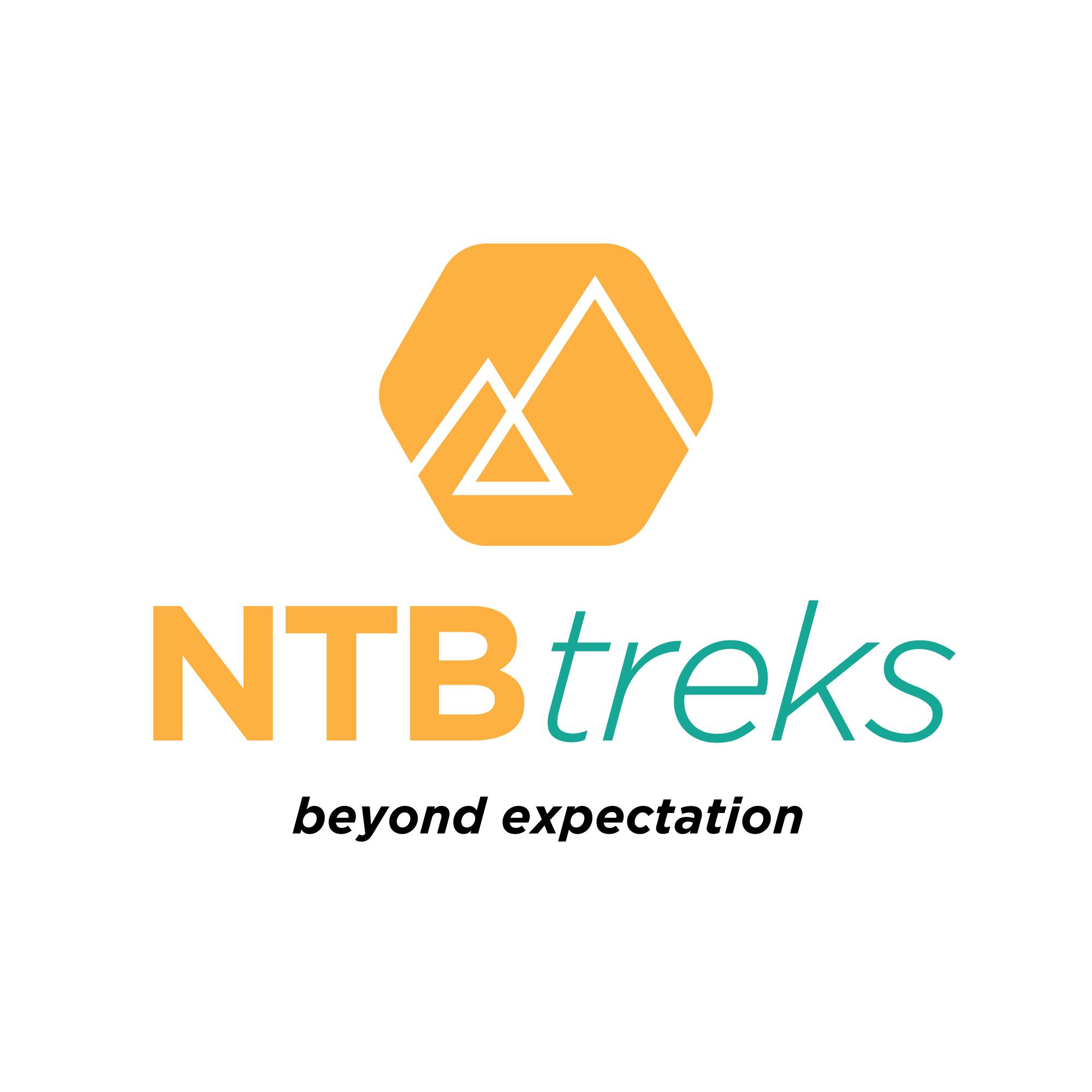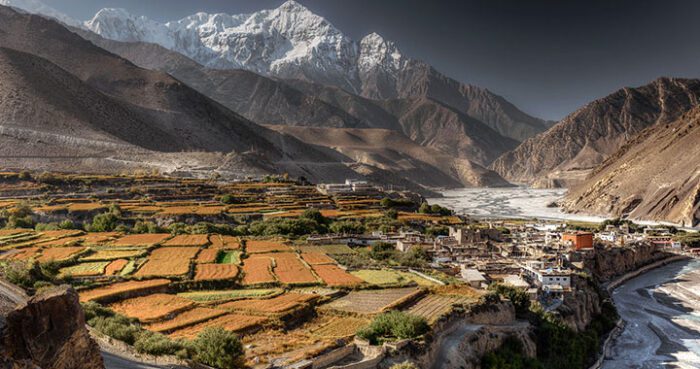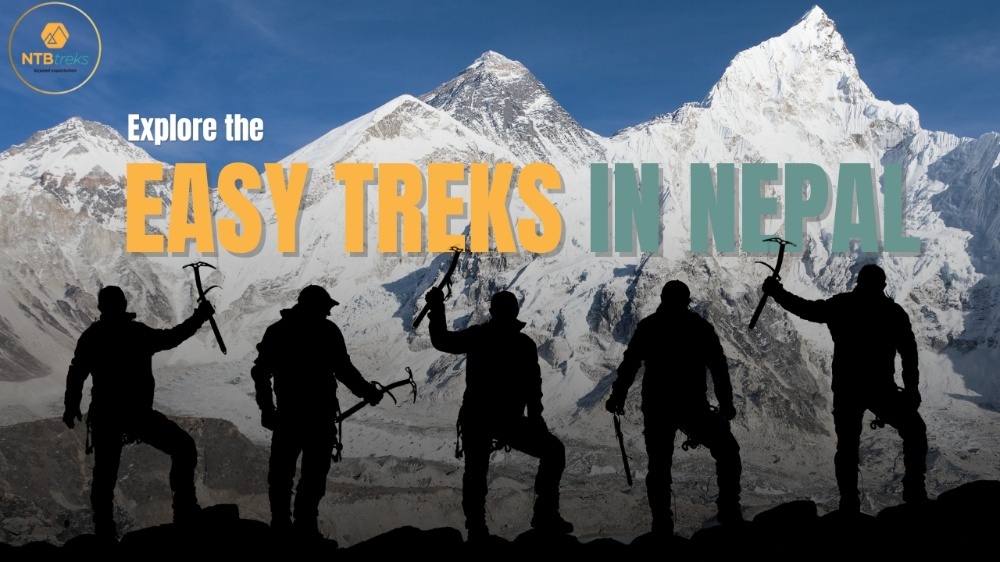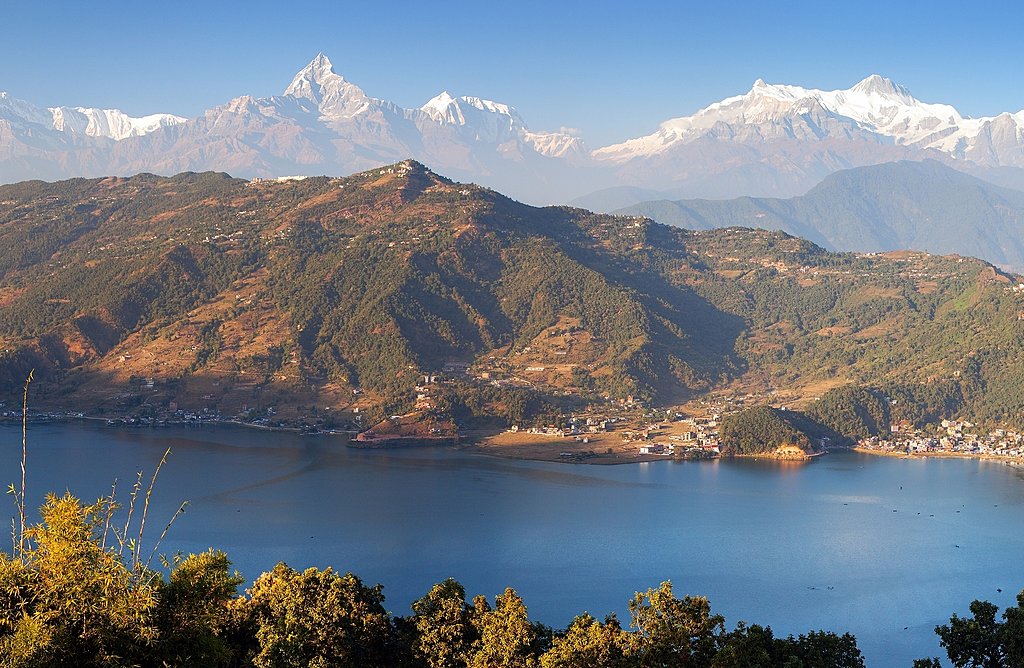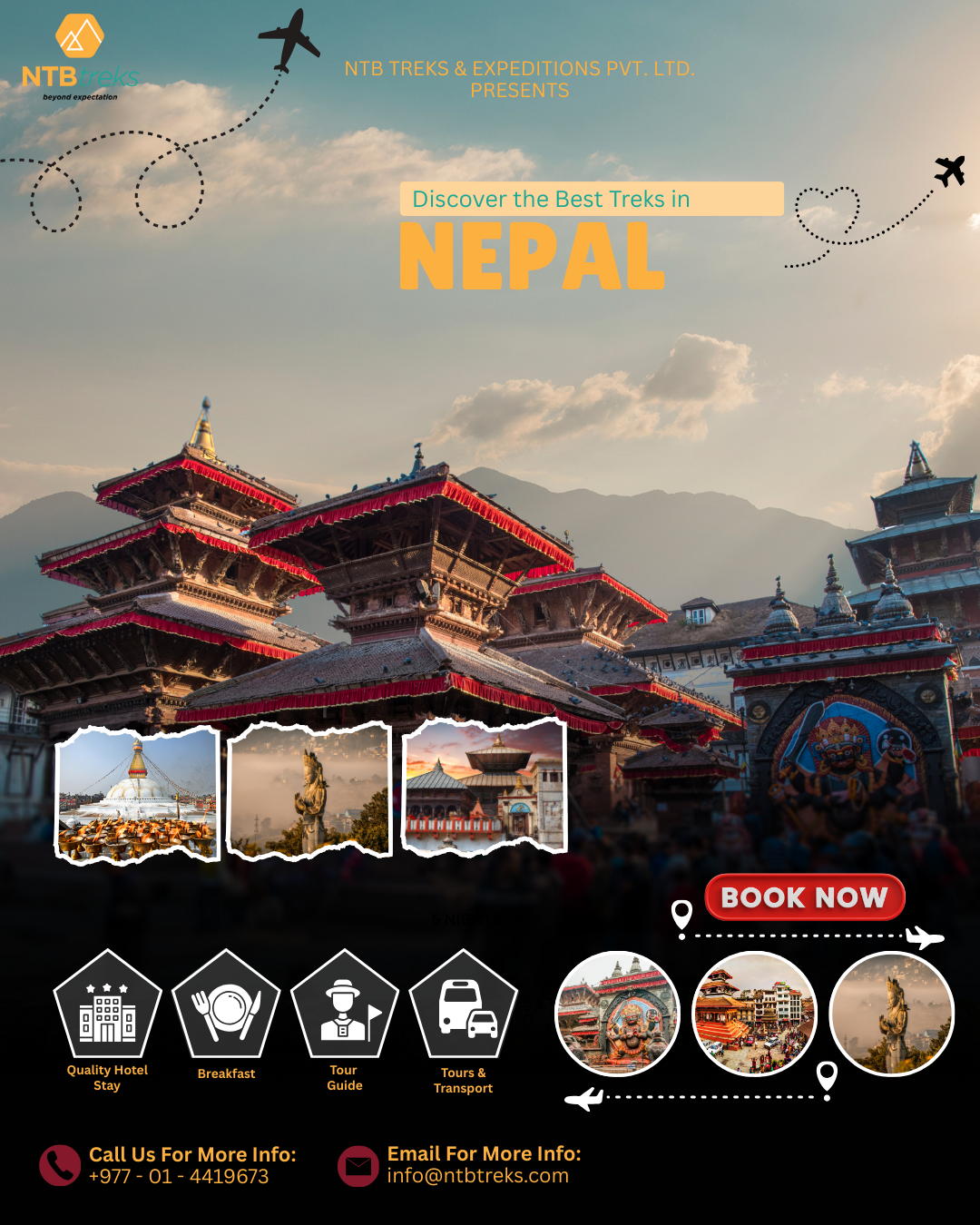Introduction
Nepal is a trekker’s paradise, offering a range of stunning landscapes, cultural experiences, and once-in-a-lifetime adventures. If you’re planning to trek in Nepal for the first time, it’s essential to be well-prepared for the journey. NTB Treks and Expeditions is here to guide you through everything you need to know to ensure your trek is safe, enjoyable, and memorable. Whether you’re headed to the famous Everest Base Camp or the breathtaking Annapurna Circuit, this guide will provide all the information you need to start your adventure in the Himalayas.
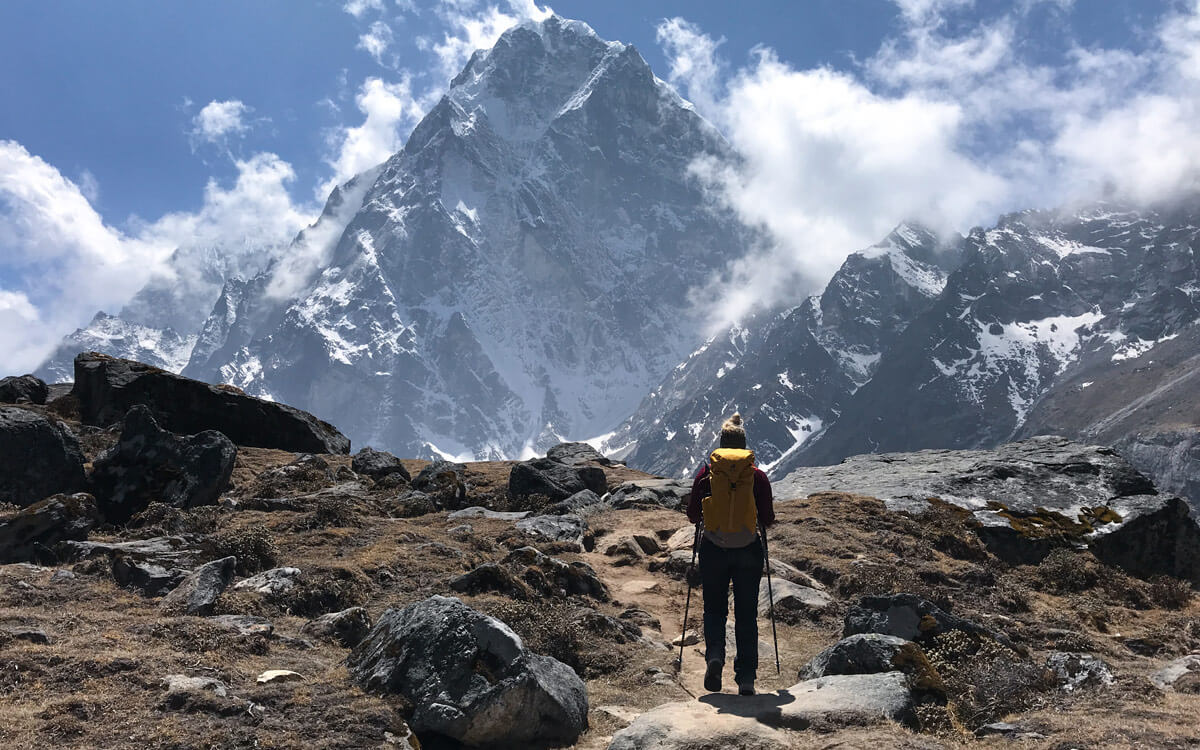
-
Choose the Right Trek for Your Experience Level
Nepal offers a variety of treks, from easy, short hikes to challenging high-altitude expeditions. As a first-time trekker, it’s important to choose a trek that suits your physical fitness and trekking experience. NTB Treks offers customized itineraries tailored to different levels of difficulty.
- Easy treks: If you’re new to trekking, consider routes like the Ghorepani Poon Hill Trek or the Langtang Valley Trek. These are moderate treks with less altitude and shorter durations, making them perfect for beginners.
- Moderate treks: The Annapurna Base Camp and Everest Base Camp treks are popular among first-timers with moderate fitness levels. While the altitude may be challenging, the routes are well-established, and NTB Treks provides support every step of the way.
- Challenging treks: If you’re an experienced trekker seeking a more strenuous adventure, Manaslu Circuit or Upper Mustang can be the right options.
At NTB Treks, our guides will help you choose the right trek based on your fitness level, time, and preferences.
-
Physical Preparation for Your Trek in Nepal
Physical fitness is crucial for any trek in Nepal, especially if you’re planning to go to high-altitude destinations. Training ahead of time will help you stay fit and ensure you can handle the demanding terrain.
Pre-Trek Fitness Tips:
- Cardio Exercise: Engage in activities such as walking, hiking, running, or cycling to build stamina and endurance. Aim for at least 3-4 weeks of consistent cardio exercise.
- Leg Strength: Focus on building strength in your legs with squats, lunges, and step-ups to handle the uphill treks.
- Altitude Acclimatization: If possible, try hiking at higher elevations in your home country before arriving in Nepal. This will help your body adjust to lower oxygen levels and prepare for altitude challenges.
- Stretching & Flexibility: Incorporate yoga or stretching exercises to increase flexibility and reduce the chances of injuries.
By preparing physically, you’ll be able to enjoy the trek without overexerting yourself.
-
Essential Gear for Trekking in Nepal
Proper gear is essential for your trek in Nepal. Having the right equipment will keep you comfortable and safe throughout your journey. NTB Treks provides trekking gear for rent, so don’t worry if you don’t have everything on hand.
Key Items to Pack for Your Trek in Nepal:
- Trekking Boots: A sturdy pair of waterproof trekking boots with good ankle support is essential. Make sure to break them in before your trek to avoid blisters.
- Clothing: Layering is key when trekking in Nepal. Pack light, moisture-wicking base layers, a warm fleece or down jacket, and a waterproof outer layer. Be sure to bring gloves, a hat, and a scarf for warmth.
- Backpack: A comfortable, lightweight backpack to carry your essentials. Aim for a 30-40L daypack for shorter treks, and a larger one (50-60L) for longer treks.
- Sleeping Bag: Choose a sleeping bag rated for cold temperatures, especially for higher altitudes.
- Trekking Poles: Helpful for maintaining balance, especially on steep and rocky terrain.
- Water Bottle and Filter: Staying hydrated is crucial, so bring a reusable water bottle and a purification filter or iodine tablets to treat water along the route.
- Personal Items: Don’t forget sunscreen, a headlamp, a first-aid kit, a camera, toiletries, and a power bank for charging your devices.
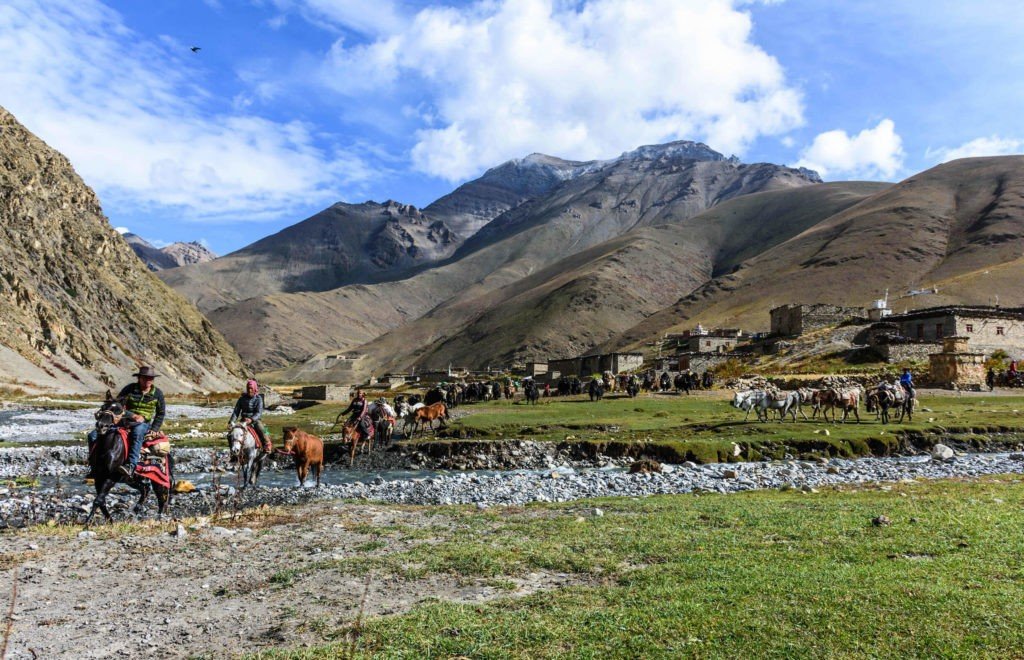
-
Understanding Altitude and Acclimatization
One of the key factors to consider when you trek in Nepal is altitude sickness. As you gain altitude, the oxygen level decreases, which can affect your health if not properly managed. The highest treks in Nepal, like Everest Base Camp, are located at elevations over 5,000 meters (16,400 feet), where acclimatization is crucial.
Tips for Safe Acclimatization:
- Gradual Ascend: Avoid rapid ascents and take plenty of rest days to allow your body time to adjust.
- Hydration: Drink plenty of water and fluids to help your body acclimatize.
- Rest: Listen to your body. If you feel fatigued or dizzy, it’s important to rest and avoid pushing yourself.
- Medicines: NTB Treks recommends carrying Diamox (Acetazolamide), a medication that helps prevent altitude sickness. Be sure to consult your doctor before using it.
-
Hiring a Guide and Porter
Although trekking in Nepal is possible independently, hiring a guide and porter is highly recommended, especially for your first trek. NTB Treks provides experienced local guides who know the terrain, culture, and language. They’ll help you navigate the trails, offer insights into local culture, and ensure your safety.
A porter will carry your heavier load, allowing you to focus on enjoying the trek. Hiring a porter also helps provide work and economic benefits to local communities.
-
Managing Your Trekking Budget
Trekking in Nepal can be affordable, but it’s important to manage your budget. Costs vary depending on your trek’s duration, the services you require, and whether you opt for a group trek or a private trek.
NTB Treks offers various packages that include accommodation, permits, and guiding services. However, there may be additional costs for:
- Permits: Depending on the region, you may need trekking permits, such as TIMS (Trekking Information Management System) or National Park permits.
- Accommodation: While many teahouses along trekking routes offer basic facilities, prices can vary based on altitude and demand.
- Meals: Meals on the trail range from simple dal bhat to more Western-style dishes. Expect to pay more for food at higher altitudes.
-
Cultural Etiquette and Local Customs
Trekking in Nepal isn’t just about the landscapes; it’s also about immersing yourself in the rich local culture. As you trek, you’ll pass through traditional villages, and interacting with local people will enhance your experience.
Cultural Tips:
- Always greet locals with a friendly “Namaste” (the traditional Nepali greeting).
- Be respectful when visiting monasteries and religious sites. Ask permission before taking photos.
- Support local businesses by buying souvenirs and goods from village shops.
-
Choosing NTB Treks and Expeditions
When you choose to trek in Nepal with NTB Treks, you’re not only signing up for a trek, you’re also gaining a travel partner who will make sure everything goes smoothly. From airport pickups to guiding you through remote villages, we provide everything you need for a seamless and enjoyable experience.
Our experienced team of local guides, porters, and staff will ensure you have a safe and unforgettable trek, whether you’re hiking in the Everest region or Annapurna or exploring hidden gems in Langtang or Mustang.
Conclusion
Preparing for your first trek in Nepal can feel overwhelming, but with the right information and planning, you’re set for an adventure of a lifetime. With the help of NTB Treks and Expeditions, your trek in Nepal will be comfortable, safe, and unforgettable. From choosing the right trek to physical preparation, gear, and acclimatization, we’re here to support you every step of the way.
Ready to start your trek in Nepal? Contact NTB Treks today, and let us help you plan your Himalayan adventure!

